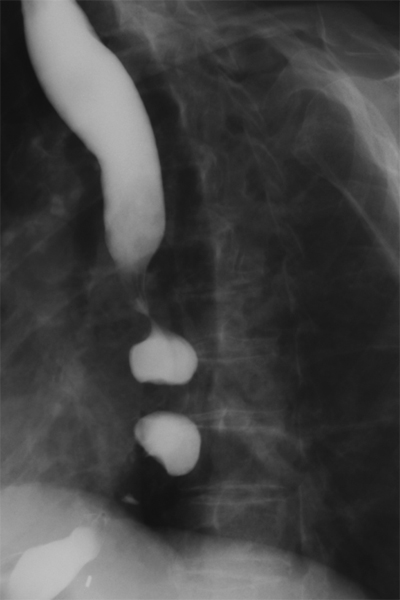GI Radiology > Esophagus > Functional Abnormalities
Functional Abnormalities of the Esophagus
![]()
Diffuse Esophageal Spasms |
|
Clinical Diffuse esophageal spasms (DES) is a motility disorder characterized by a clinical triad of uncoordinated esophageal contractions, chest pain, and increased intraluminal pressure. The chest pain is intermittent, usually substernal, and unrelated to swallowing. The pain is often accompanied by dysphagia. On manometry, there are repetitive or prolonged-duration contractions, high-amplitude contractions and frequent spontaneous contractions. LES function often remains normal though with complete relaxation.
Radiological findings The radiographic findings of DES reflect the findings on manometry. Primary peristalsis is present in the cervical esophagus, but in the lower two-thirds it becomes absent. The contractions become repetitive and simultaneous. The contractions may become so forceful as to obliterate the esophageal lumen and compartmentalize it, therefore producing the typical "corkscrew" or "rosary bead" appearance in contrast studies. The esophageal wall may also thicken in DES to 2cm or greater (normal being less than 4mm).
Esophagrams
showing the typical "corkscrew" or "beaded" appearance
of diffuse esophageal spasms |


